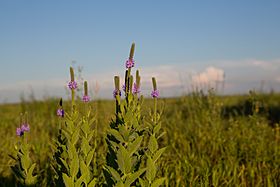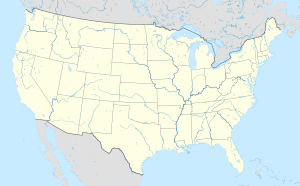Glacial Ridge National Wildlife Refuge facts for kids
Quick facts for kids Glacial Ridge National Wildlife Refuge |
|
|---|---|
|
IUCN Category IV (Habitat/Species Management Area)
|
|
 |
|
| Location | Polk County, Minnesota, United States |
| Nearest city | Mentor, Minnesota |
| Area | 37,756 acres (152.79 km2) (Planned) |
| Established | October 12, 2004 |
| Governing body | U.S. Fish and Wildlife Service |
| Website | Glacial Ridge National Wildlife Refuge |
The Glacial Ridge National Wildlife Refuge is a special place in the United States where nature is protected. It was created on October 12, 2004. This refuge is the 545th National Wildlife Refuge in the country. Many different groups worked together to make it happen.
The Nature Conservancy, a conservation group, led the effort to create the refuge. They also donated the first 2,300 acres (9.3 km2) of land. The refuge is planned to grow to 37,756 acres (153 km2). The U.S. Fish and Wildlife Service calls it the largest project to bring back tallgrass prairie and wetlands in U.S. history.
Contents
Where is Glacial Ridge Refuge?
The Glacial Ridge National Wildlife Refuge (NWR) is located in Minnesota. You can find it about six miles (10 km) west of Mentor, Minnesota. It is also about twelve miles (19 km) east of Crookston, Minnesota.
What is the Glacial Ridge Refuge Like?
When it first started, the refuge was about 2,300 acres (9 km2) in size. The plan is for it to grow to at least 37,756 acres (153 km2). A large part of this area, about 5,000 acres (20 km2), was never plowed by farmers.
Another 8,000 acres (32 km2) has been planted with native prairie grasses. More than 100 wetlands have also been brought back to life. Bringing back the native tallgrass prairie is a big job that will take many years.
Why is the Refuge Important?
The Glacial Ridge National Wildlife Refuge has five main goals:
- To keep many different types of waterfowl and other migratory birds safe. These birds depend on prairie wetlands and grasslands.
- To protect and bring back different kinds of native fish, wildlife, and plants. These species live in tallgrass prairies and prairie wetlands.
- To work with other groups to bring back or improve native tallgrass prairies, wetlands, and special plant areas.
- To make sure the water quality and amount are healthy and natural.
- To let people enjoy nature in ways that help wildlife. This includes teaching people about the northern tallgrass prairie and what the National Wildlife Refuge System does.
Amazing Wildlife and Plants
This area, with its prairies and wetlands, is home to many different kinds of plants. One very special plant is the western prairie fringed orchid. This orchid is considered threatened by the government.
Other natural areas you can find here include wet and dry tallgrass prairies. There are also gravel prairies, willow bushes, mixed prairies, and sedge meadows. You can also see aspen woodlands and marshes. Some prairie plants found here are prairie Junegrass, purple prairie clover, big bluestem, little bluestem, and mat muhly.
When the Glacial Ridge Refuge is fully restored, it will provide homes for many animals. These animals are similar to those found in another nearby preserve called Pembina Trail Preserve. That preserve has over 73 types of birds, 35 types of butterflies, 11 types of mammals, three types of amphibians, and one type of reptile.
Birds like the sandhill crane, sharp-tailed grouse, upland sandpiper, northern harrier, marbled godwit, Wilson's phalarope, sora rail, marsh wren, and clay colored sparrow will likely have more space at Glacial Ridge. In recent years, people have also seen bald eagles, a peregrine falcon, and even a rare whooping crane here. In 2007, a family of burrowing owls with two baby owlets was seen on a restored prairie.
You can also find whitetail deer, moose, and prairie grouse in the refuge. It has also become a very important place for waterfowl to nest and raise their young. One of the goals of the refuge is to bring back the greater prairie chicken. Hunting is allowed in certain parts of the refuge.


